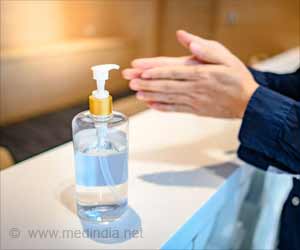Ozone gas, a highly reactive chemical, could provide a safe means for disinfecting certain types of personal protective equipment (PPE) that are in high demand to shield healthcare personnel from COVID-19, reports a new study.

‘Ozone gas would be a viable method for hospitals and other organizations to disinfect garments, goggles, and gloves.
’





“Ozone is one of the friendliest and cleanest ways of deactivating viruses and killing almost any pathogen,” said M.G. Finn, chair of Georgia Tech’s School of Chemistry and Biochemistry, who led the study. “It does not leave a residue; it’s easy to generate from atmospheric air, and it’s easy to use from an equipment perspective.”The findings of the research are described in a paper posted to the medRxiv preprint server and will be submitted to a journal for peer review and publication. Ozone can be produced with inexpensive equipment by exposing oxygen in the atmosphere to ultraviolet light, or through an electrical discharge such as a spark.
During local and regional peaks in coronavirus infection, shortages of PPE can force hospitals and other health care facilities to reuse PPE that was intended for single use. Health care facilities have used ultraviolet light, vaporized hydrogen peroxide, heat, alcohol, and other techniques to disinfect these items, but until recently, there had not been much interest in ozone disinfection for PPE, said Finn, who also holds the James A. Carlos Family Chair for Pediatric Technology.
Ozone is widely used for disinfecting wastewater, purifying drinking water, sanitizing food items, and disinfecting certain types of equipment – even clothing. Ozone disinfection cabinets are commercially available, taking advantage of the oxidizing effects of the gas to kill bacteria and inactivate viruses.
“There was no reason to think it wouldn’t work, but we could find no examples of testing done on a variety of personal protective equipment,” Finn said. “We wanted to contribute to meeting the needs of hospitals and other healthcare organizations to show that this technique could work against pathogens similar to the coronavirus.”
Advertisement
Santangelo, Finn, and their team devised a test procedure in which solutions containing the two viruses were placed onto samples of the PPE materials under study. The solutions were allowed to dry before the samples were placed in a chamber into which ozone was introduced at varying concentrations as low as 20 parts-per-million. After treatment for different lengths of time, the researchers tested the PPE samples to determine whether or not any of the viruses on the treated surfaces could infect cells grown in the laboratory. The entire test procedure required about a day and a half.
Advertisement
Loren Williams, a professor in the School of Chemistry and Biochemistry, introduced the research team to a manufacturer of ozone disinfection chambers, which allowed evaluation of the equipment using the test protocol. During the test, the researchers learned that having sufficient relative humidity in the chamber – at least 50% was essential for rapidly inactivating the viruses in a consistent manner.
After subjecting face masks and respirators to ozone disinfection, the team worked with Associate Professor Ng Lee (Sally) Ng from the School of Chemical and Biomolecular Engineering to evaluate the filtration capabilities of the items. The ozone treatment didn’t appear to negatively affect the N-95 filtration material.
While the ozone didn’t harm the filtration ability of the masks, it did damage the elastic materials used to hold the masks on. While the elastic headbands could be removed from the masks during ozone disinfection, removing and replacing them on a large scale may make the ozone treatment technique impractical. Otherwise, however, ozone may offer to be an alternative technique for disinfecting other types of PPE.
“Ozone would be a viable method for hospitals and other organizations to disinfect garments, goggles, and gloves,” Finn added. “It is inexpensive to produce, and we hope that by sharing information about what we’ve found, healthcare facilities will be able to consider it as an option, particularly in low-resource areas of the world.”
Beyond those already mentioned, the research involved Emmeline Blanchard from the Wallace H. Coulter Department of Biomedical Engineering at Georgia Tech and Emory University, Justin Lawrence, Taekyu Joo and Britney Schmidt from the Georgia Tech School of Earth and Atmospheric Sciences, Minghao Xu from the Georgia Tech School of Chemistry and Biochemistry, and Jeffrey Noble from the Parker Petit Institute for Bioengineering and Bioscience. n
Source-Newswise












